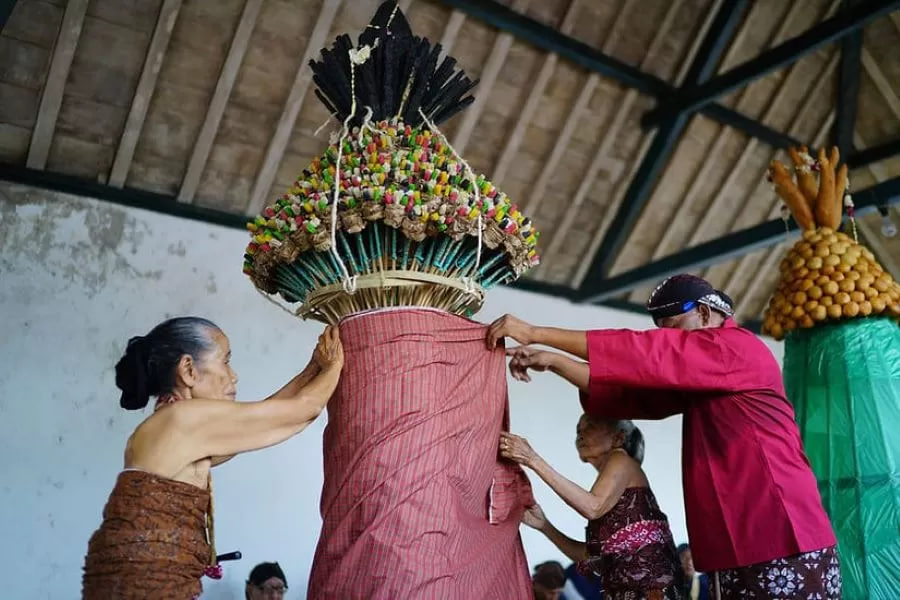News
Tumplak Wajik: A Sweet and Sticky Tradition Full of Meaning at the Yogyakarta Palace
In most places, wajik—the sweet, sticky rice cake—is simply a guest on the plates at celebrations. But in Jogja, it takes center stage in a grand, symbolic event called Tumplak Wajik. This isn’t just about enjoying a tooth-achingly sweet snack; it’s about honoring a tradition that has been carefully preserved for generations within the Yogyakarta Palace. It's one of the rare moments when wajik isn’t just eaten but is stacked, paraded, and revered.
Tumplak Wajik marks the opening of three major royal festivities: Grebeg Maulud, Grebeg Syawal, and Grebeg Besar. Held in Magangan, one of the inner courtyards of the Keraton, it usually takes place two days before the main Grebeg event. During this sacred ceremony, dozens of abdi dalem (palace servants), dressed in full traditional attire, arrive bearing towering tumpeng made entirely of wajik. But this isn’t your typical yellow rice cone—this tumpeng is a perfectly conical tower of sticky rice sweets, shimmering with a rich brown hue and sending sweet aromas into the air.
As they carry the tumpeng, the abdi dalem play traditional instruments like the kenong, gong, and terbang drums, while singing Javanese children's songs (dolanan). Children who watch the ceremony often get swept away by the rhythm and colors, but for the elders and tradition enthusiasts, this moment is steeped in profound symbolism and reverence.
Why wajik? In Javanese philosophy, wajik—made from glutinous rice and palm sugar—represents unity, togetherness, and the sweet bonds of community. Just as sticky rice clings tightly together, so should people maintain close ties and not be easily separated. Its sweetness is a prayer for blessings, harmony, and prosperity to envelop both the people and their leaders.
The ceremony also stands as proof that Jogja's traditions are not just preserved but are lived with devotion. Although it may appear simple, every element of Tumplak Wajik carries a deeper message. Once the ceremony concludes, the tumpeng wajik are distributed to the public. Many people come specifically hoping to receive a piece of this sacred treat, believing it brings good fortune.
At first glance, Tumplak Wajik might seem like a minor event—just stacking sweet rice cakes. But beneath that sticky pile lies a rich tapestry of history, hope, and prayers. The stickiness of wajik isn’t just about taste; it’s about maintaining a strong bond with one's cultural roots.
So if you ever find yourself in Jogja during Tumplak Wajik, make time to witness how a seemingly small tradition can hold such immense meaning.



